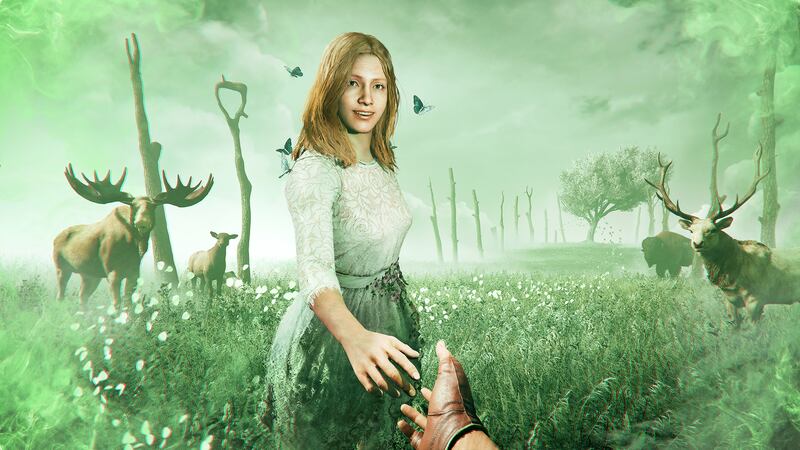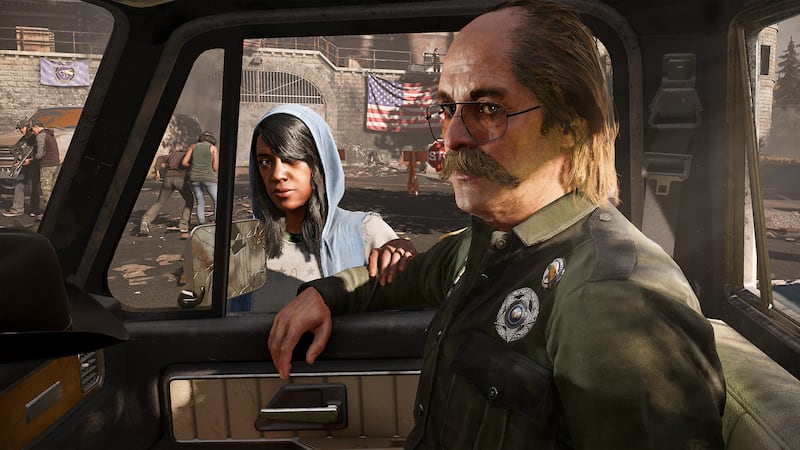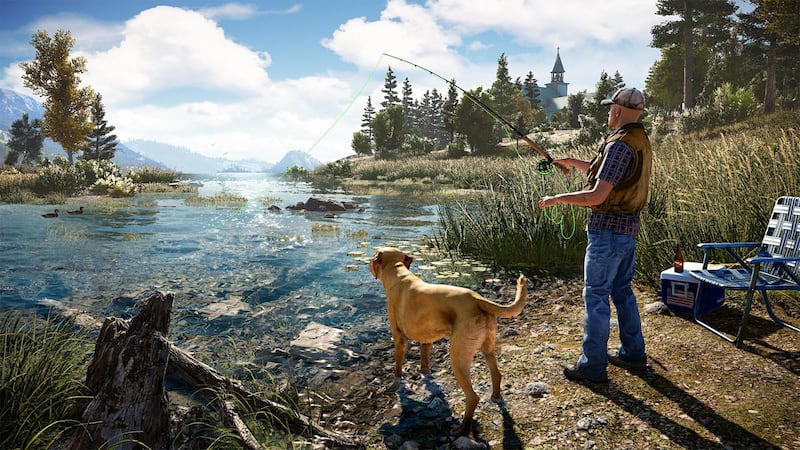Excitement levels for Far Cry 5 have been high ever since its doomsday cult setting was revealed nearly a year ago.
Now it’s here, does the reality live up to expectations?
Far Cry has a tried and trusted formula and fundamentally the newest version sticks pretty rigidly to it.
As with previous iterations, you are a one-person army leading the charge to take down a malevolent force and its charismatic leader who have taken over an area.
Here the setting is a fictional corner of rural Montana, Hope County, and the force, intriguingly, is a cult called in Eden’s Gate.
As you’d expect, the leader – Joseph Seed, the Father – has lieutenants you have to take down before the final confrontation and the cult has outposts you need to liberate.
There are colourful characters you need to help along the way, stashes of loot to find, animals to take down, enemy convoys to take out – and an eye-watering range of weapons and vehicles to use while doing it.
Perhaps the biggest innovation is a neat new gameplay mechanism that allows players more control over how they experience and explore the world of the game.
Each of the Father’s three lieutenants – his siblings Jacob, John and Faith – control one section of Hope County.
Within each of the three sections, you can accrue resistance points – basically a measure of your success in opposing Eden’s Gate within that section.

There are big points to be had by completing fairly major missions alongside other key characters or liberating outposts, but they can also be gained by carrying out smaller tasks like saving hostages, taking out enemy vehicles and destroying cult property.
Impressively, the world of the game slowly and naturally reveals itself – for instance, you could stumble across a civilian being taken hostage in the street who, if you free them, will point you towards an outpost where members of the cult are holed up.
Then when you liberate the outpost, you could find a map in one of the buildings that points out hunting and fishing areas nearby, or a character who knows where another key player might be located needing your help.
Along the way, you’ll also pick up perk points, either by completing challenges (kill and skin a bear, for example, kill five enemies from long range, or fly a certain distance in your wingsuit) or picking up special perk magazines. These allow you to learn new skills, expand your ammo bags, add new holsters or boost your health.
Everything flows very naturally, with your map slowly becoming more detailed – fans of the series will probably be pleased to hear the territory-revealing radio tower tasks have bitten the dust – and opportunities to claim precious resistance points building up.
When your points reach a certain level, they’ll automatically trigger an encounter with the lieutenant in charge of that area – there are three with each one.
These are in effect the main story missions of the game, but in truth they don’t do much to advance the narrative – they’re just a way of throwing together the protagonist and the antagonists to offer a slightly different type of quest.
And herein lies one of the game’s flaws – the player character in Far Cry 5 isn’t really a character at all, but a nameless rookie deputy.
You get to choose your avatar’s gender and racial identity at the start of the game, which in terms of equality is a good step forward for a franchise which has dabbled in gratuitous female nudity in the past.
In terms of narrative, though, it’s a clear hindrance. Jason Brody and Ajay Ghale, the protagonists in Far Cry 3 and 4, may not have been characters of startling depth, but they were people with voices, personalities and internal struggles.
With the lead character having no vocal input in any situation, there’s a void at the centre of the narrative where a character should be and a layer of depth is removed from a story which really needed every inch it could get.
Because while, on the surface, the cult-based storyline of Far Cry 5 seems the perfect setting for the franchise to move into slightly weightier territory, in reality the whole thing is a bit flimsy.
The cult itself, with its extensive arsenal of firearms and its conflicts with government, seems to be based more on David Koresh’s Branch Davidians and the Waco siege of 1993 more than the Heaven’s Gate group their name nods to.
There are references to modern-day America, from the financial crisis to some pretty hardcore adherence to the second amendment, as well as disenfrachised masses, drugs, religion and survivalists.
And though the game’s development began long before he was even considered to be a serious presidential candidate, the developers have taken the decision to put some pretty explicit references to Donald Trump in there too.
But none of it is explored in any depth. Trump’s America – the divided America out of which he emerged and the one he’s now in charge of – is treated as a setting rather than a narrative theme. It’s not entirely clear what that has to do with David Koresh, either.
And if you have any moral qualms about repeatedly gunning down presumably normal people who have been brainwashed and/or drugged into joining a deadly cult, you’ll soon forget about them when these people are coming at you with a flamethrower.
That’s fine, of course – no game is required to have deep themes and it’s certainly in keeping with previous iterations of the game to balance serious topics with goofy characters and carefree gameplay.

But given the setting, given the marketing, given the reference points – it’s a game that seems to invite you to take it seriously before not quite having the confidence to see it through.
That would be eminently forgivable were the narrative itself not so weak.
The combination of the game’s seeming lack of faith in its own themes and the gaping protagonist void lead to a game which feels like it barely has a story at all.
By and large encounters with the Seed family, with their faux religious mumbo-jumbo and perfunctory back story, just seem to get in the way of what the game is really about: exploring the beautifully realised surroundings and shooting people.
Whether or not that bothers you probably depends on what type of gamer you are. In an age when narrative seems increasingly important in video games, some may find the experience a little hollow.

But many won’t care one bit, and that’s partly because the gameplay fundamentals of Far Cry 5 are so slick and wonderfully engineered – a clear and satisfying evolution of the series.
When it comes to sneaking around hostile territory undetected, shooting enemies with a sniper rifle, blowing up vehicles with remote explosives or just a good old-fashioned shootout, nobody does it better than Far Cry.
The evolved game dynamics mean exploring the world around you has never been more enjoyable, and there are even some new unexpected pleasures like fishing, flying a plane and even throwing shovels at people.
Just don’t expect to be blown away by the people you meet along the way.








